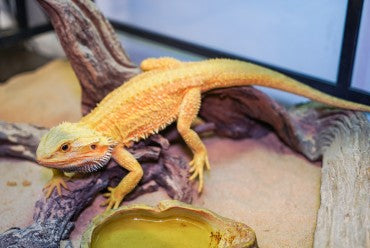The corn snake, a popular and docile pet reptile, deserves a comfortable and enriching habitat that mimics its natural environment. Providing the right tank or cage is crucial to your pet’s well-being. In this guide, we will explore the essential elements of a Corn snake habitat & tank & cage‘s habitat, tank, and cage, ensuring a happy and healthy life for your slithery companion.
The Corn Snake’s Natural Habitat
Before diving into the specifics of creating a habitat, it’s essential to understand the natural habitat of corn snakes. They are native to the southeastern United States and are often found in grasslands, forests, and farmlands. This knowledge helps in replicating their environment.
1. Tank or Cage Size
Corn snakes are relatively small, but they still require space to move and explore. A 20-gallon tank is an excellent starting point for young corn snakes, while adult snakes may need a 40-gallon tank or larger. The enclosure should allow your snake to stretch out comfortably.
2. Tank or Cage Material
Choose between glass tanks and PVC enclosures:
a. Glass Tanks
Glass tanks offer excellent visibility and are easy to find. Ensure the tank has a secure lid and good ventilation.
b. PVC Enclosures
PVC enclosures are becoming popular due to their durability and insulation properties. They often come with built-in heating and lighting fixtures.
3. Substrate
Select a safe substrate for your corn snake. Aspen shavings, cypress mulch, or paper towels are suitable options. Avoid sand or cedar shavings, which can be harmful to your pet.
4. Heating and Lighting
Corn snakes need a temperature gradient in their enclosure. Provide a heat source, such as an under-tank heating pad or a ceramic heat emitter, to create a warm side and a cooler side in the tank. Use a thermostat to regulate the temperature. While corn snakes do not typically require UVB lighting, a low-intensity UVB bulb can be beneficial.
5. Hiding Spots
Corn snakes are secretive by nature and require hiding spots for security. Provide at least one hide on the warm side of the tank and another on the cool side. These hiding spots mimic the safety of burrows.
6. Water Dish
Offer a shallow, easily accessible water dish for your snake to drink from and soak in. Ensure the water is clean and changed regularly to maintain hydration.
7. Enrichment
Enrich the enclosure with climbing branches, rocks, and artificial plants. Corn snakes are adept climbers, so adding vertical elements enhances their living space and provides mental stimulation.
8. Security
Ensure that the tank or cage has a secure lid to prevent escapes and keep other pets or children out of the enclosure. The lid should allow for proper ventilation and easy access for maintenance.
Conclusion
Creating a suitable habitat, tank, or cage for your corn snake is a fundamental aspect of responsible pet ownership. Whether you opt for a glass tank or a PVC enclosure, customization is key to replicating your snake’s natural habitat and ensuring their comfort and health.
By providing a comfortable and enriching environment with proper heating, lighting, hiding spots, and security, you’ll not only ensure the well-being of your corn snake but also gain a deeper appreciation for these fascinating reptiles.










